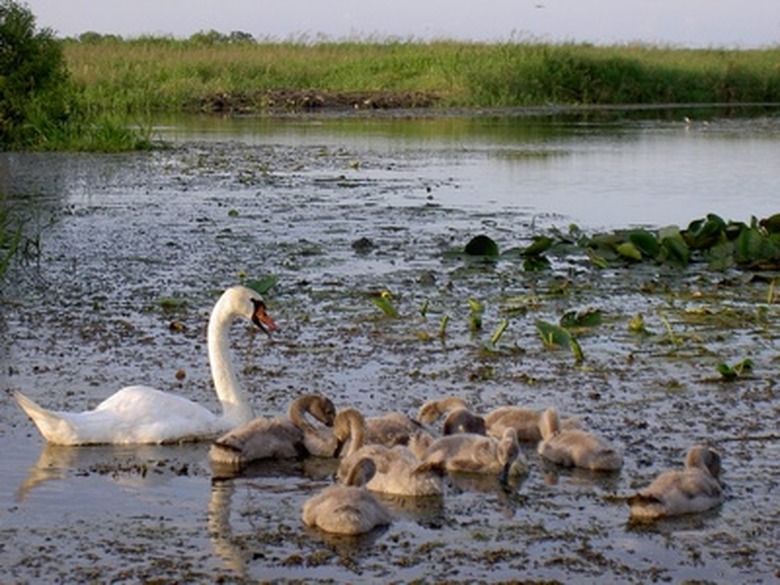How Do Wetlands Filter Water?
Wetlands are some of the most endangered ecosystems on the planet. According to the U.S. Geological Survey (USGS), less than half of the original wetlands of the lower 48 states remain, having been lost during the time period of the 1750s through the 1980s. When wetlands are drained, their environmental benefits such as filtering water are lost as well. Wetlands act as natural filters, removing sediment and toxins from the water.
Definition
Definition
The U.S. Environmental Protection Agency (EPA) defines wetlands based on the presence of water. Saturated grounds create conditions that are only favorable to water-loving plants and animals adapted to their presence. Standing water can be a seasonal occurrence from spring rains or winter thaws. It can also be a permanent feature of the landscape.
Water Flow
Water Flow
The primary way that wetlands filter water is through their role in water flow. As sediment-containing water passes through wetlands, the water flow slows. Sediment will drop out of the water and become part of the ground layer. In this way, the water becomes clearer and sediment is removed which would otherwise create cloudy water conditions.
Soil Absorption
Soil Absorption
Wetlands contain water-loving soils called histosols, one of 12 soil orders identified by the USDA Natural Resources Conservation Service. There are two characteristics which define these soils. First, histosols contain 20 to 30 percent organic matter. The presence of organic matter accounts for the second of the defining traits of histosols. These soils develop in areas which are poorly drained. Thus, the saturated, poorly drained conditions, which are the second characteristic, cause decomposing plant or animal material to become part of the soil. Histosols can absorb great quantities of water. According to the EPA, an acre of wetlands is capable of absorbing up to 1.5 million gallons of water.
Benefits
Benefits
Removal of sediment benefits both the plants and animals of wetlands. Sediment often contains toxins which can harm plant or animal tissue. Rather, contaminants become locked in the sediment layer. As long as this layer remains undisturbed, the effects of these pollutants will be isolated, preventing direct contact with flora or fauna species. Even if the sediment is uncontaminated soil, there are still benefits from this filtering action. Filter-feeding animals, such as clams, thrive best when waters are less cloudy or turbid.
Threats
Threats
The health of wetlands and their filtering abilities continue to face threats from development and pollution. Agricultural and urban runoff pollutes their waters, threatening the plants and animals which populate them. The diversity of plants is important to its filtering ability. Introduction of invasive plants such as purple loosestrife can out-compete native plants and create dense monocultures which impede water flow. In order for wetlands to survive, threats from disturbance must be mitigated.
References
- "Ecology and Field Biology"; Robert Leo Smith; 1990
Cite This Article
MLA
Rogers, Chris Dinesen. "How Do Wetlands Filter Water?" sciencing.com, https://www.sciencing.com/do-wetlands-filter-water-6398284/. 22 November 2019.
APA
Rogers, Chris Dinesen. (2019, November 22). How Do Wetlands Filter Water?. sciencing.com. Retrieved from https://www.sciencing.com/do-wetlands-filter-water-6398284/
Chicago
Rogers, Chris Dinesen. How Do Wetlands Filter Water? last modified August 30, 2022. https://www.sciencing.com/do-wetlands-filter-water-6398284/
